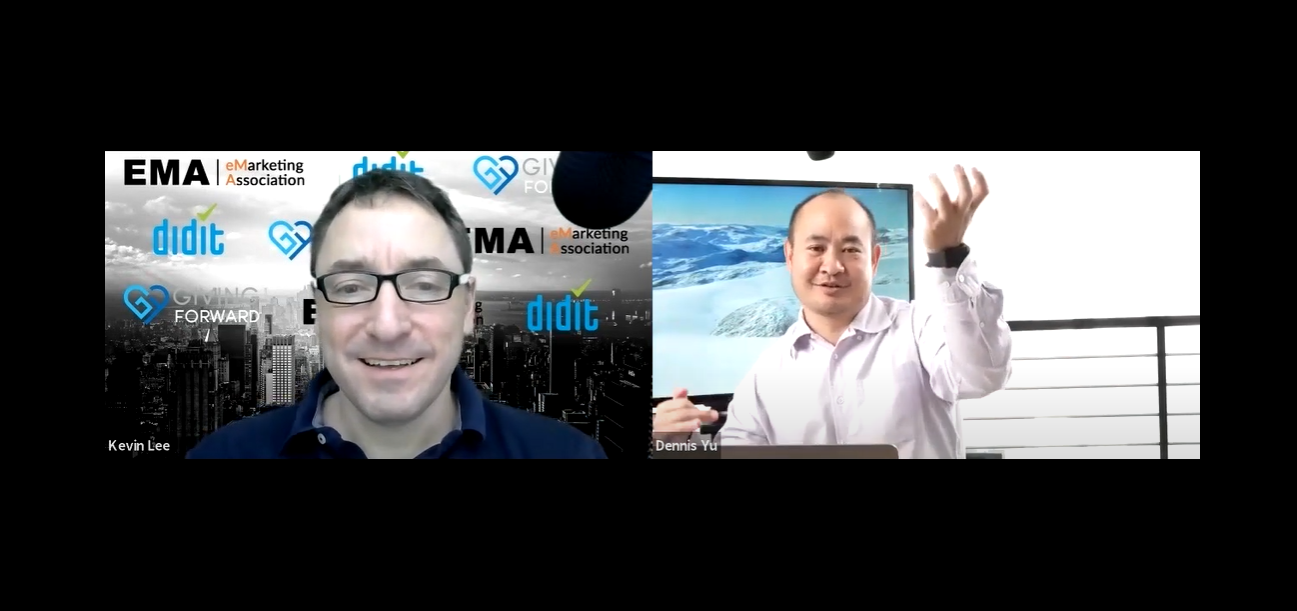 Search marketers know how important it is to be able to harvest demand from consumers searching for specific products or services offered by the client. Such demand can be effectively harvested through paid search media and SEO.
Search marketers know how important it is to be able to harvest demand from consumers searching for specific products or services offered by the client. Such demand can be effectively harvested through paid search media and SEO.
But as Didit’s Kevin Lee notes in a new interview with Blitzmetric’s Dennis Yu for the eMarketing Association, “you can’t live exclusively on harvesting existing demand,” especially when CPCs are high and organic SEO success is difficult to achieve in highly competitive business niches. In these common situations, “you need the world of Facebook and social media and other marketing channels to put the right message in front of the right people at the right time to create the demand.”
Video is the key
Dennis Yu — an experienced search marketer — is no stranger to harvesting demand through search media, but realized that money was being left on the table by neglecting the demand-creation side of online marketing. “I got fat and lazy bidding on branded keywords and off traffic that was bottom-of-funnel. And so I thought that search was so easy because you could just pay your way there, rent the traffic, and then SEO your way to all these other kinds of terms. When people started doing things like videos and podcasts, and things showing their face, I didn’t want to show my face.”
“But then I realized that for all the other businesses out there — the ones that were succeeding, they needed to have a face. Because if it’s on Facebook, you need a face. And if it’s on social media, you need a story. Stories come from people. So there needs to be video.”
Keep it Simple and Storyful
Yu doesn’t believe you have to spend a fortune to create a compelling online video. The videos he creates for his clients often run for just a few minutes and are organized in Q/A form in which the client answers questions about specific problems faced by his/her target audience that can be solved by the client. Once recorded, the videos are split into smaller, question-specific segments that are independently promoted (boosted) on various social media channels, while the longer version is placed on the client’s web site, where it can be the destination of paid search traffic.
Even though these videos may be “low tech,” they can be highly effective. What makes them compelling and conveys “social proof” is that they show a human face addressing the challenges of the particular target audience in a personal, approachable way. “If it’s a service or people-based business, they’re going to do so much better, even if their hair is terrible, or they’re not well-spoken, or they don’t like how their voice sounds.”
Video as Tie-Breaking Differentiator
The major market advantage that accrues from creating and distributing online videos on social media comes from the fact that — in many business niches, especially in B2B — you may be the only firm out there doing this, a situation that Kevin Lee terms one of “haves vs. have nots.” “If you’re in a competitive set and your competition has all this social proof, and they have all of this great content, that’s the tie-breaker.” Consumers will be attracted to the marketer with the content, “even if it’s not great production quality, the mere fact that they went through the trouble to do it is a huge differentiator.”
“We used to talk about this in search: that if you’re not in the SERP, you’re invisible. Now that’s moved to social. If you’re not in social, you might not be invisible, but you’re going to lose the person, because they might come in through search, but there’s no supporting social proof, whereas, in the other search result, there is a ton of social proof that makes them look more ‘legit.’ They look more authentic. And that’s going to become the differentiator.”
You can watch the complete interview between Kevin Lee and Dennis Yu here.
- 10 Mistakes to Avoid When Using QR Codes for Marketing - September 20, 2023
- Kevin Lee on How AI Changes the SEO Landscape - August 31, 2023
- The Power of Compound Marketing: Kevin Lee Presents @ 1MediaWorld 2023 Global Conference - March 7, 2023
